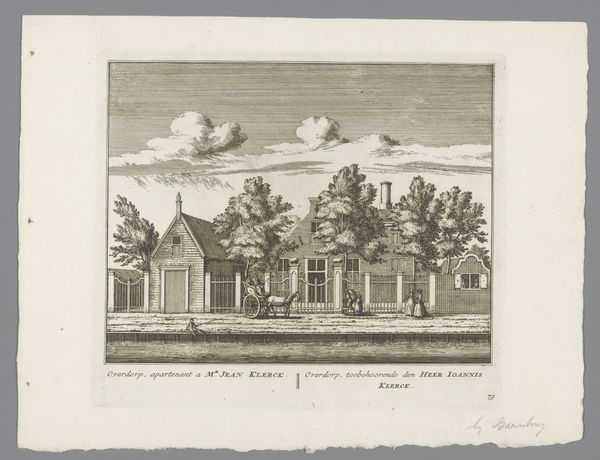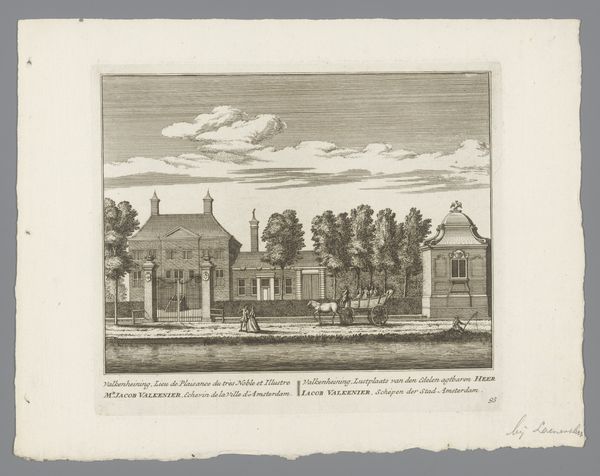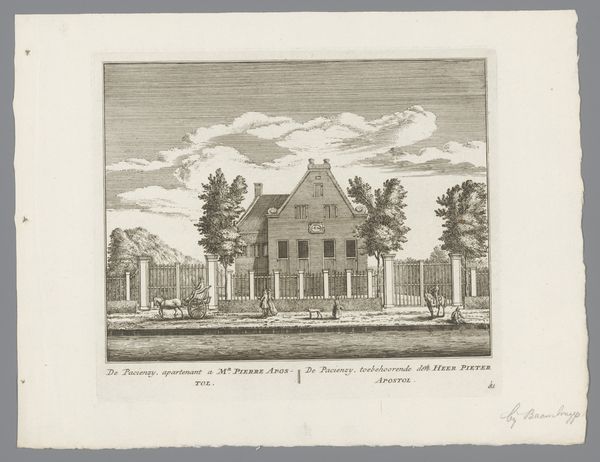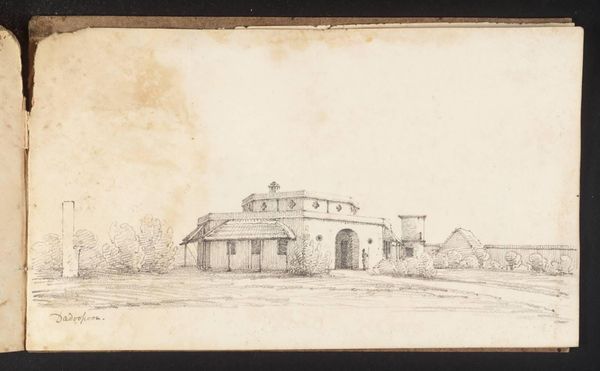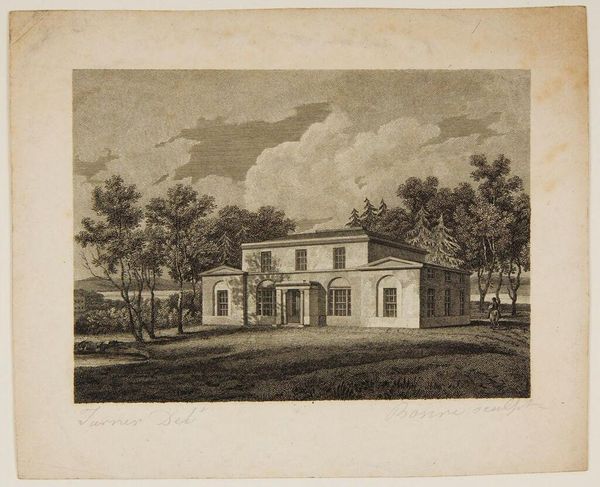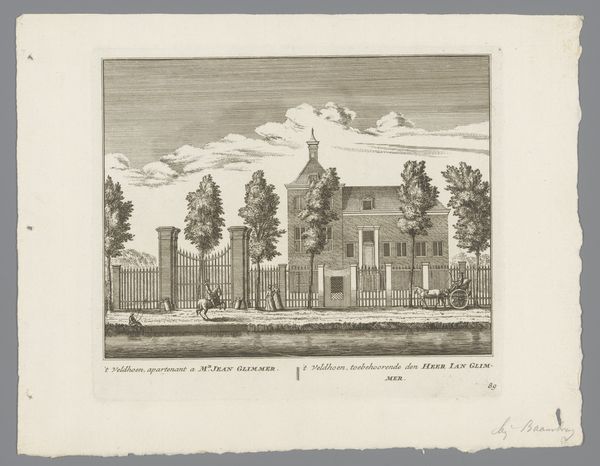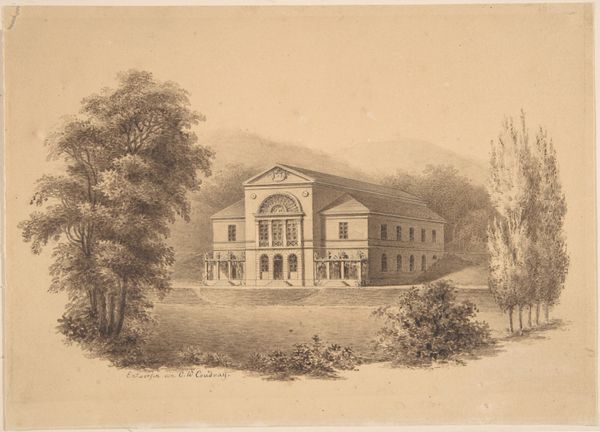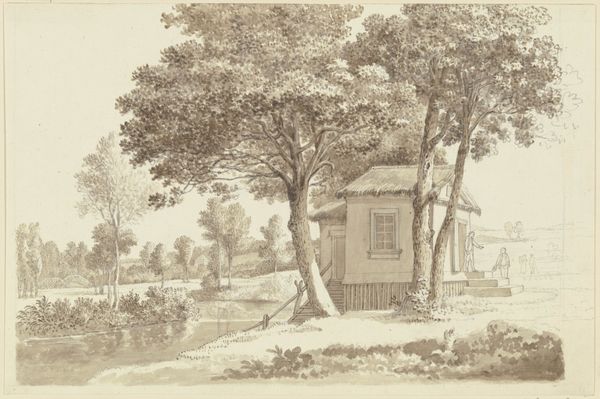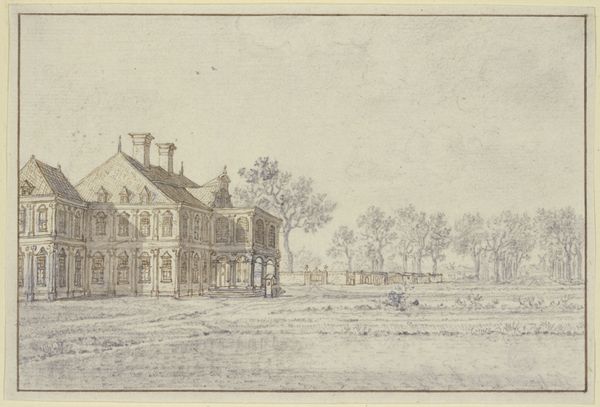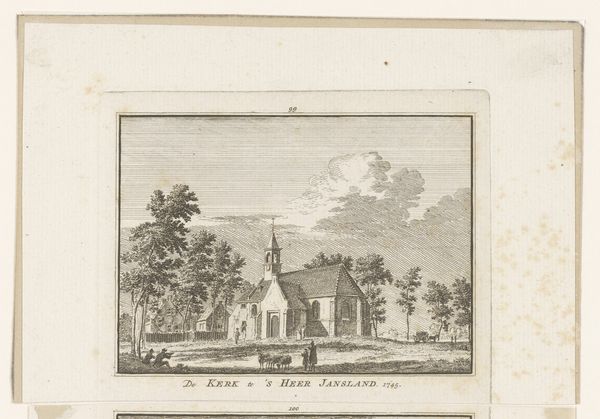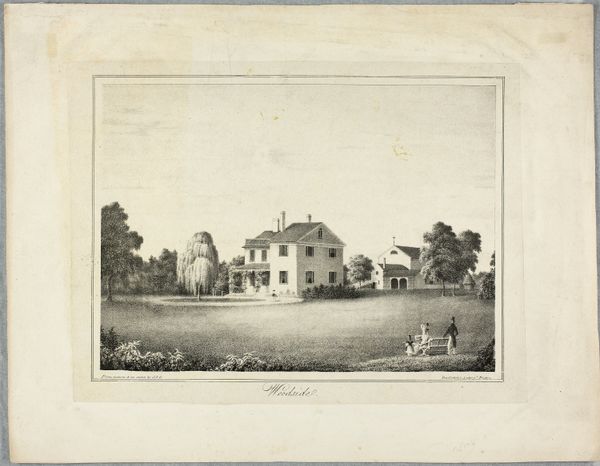
drawing, print, watercolor, pencil
#
tree
#
drawing
#
neoclacissism
# print
#
landscape
#
watercolor
#
coloured pencil
#
pencil
#
watercolour illustration
Dimensions: sheet: 7 7/16 x 11 3/4 in. (18.9 x 29.8 cm) image: 5 3/4 x 10 1/8 in. (14.6 x 25.8 cm)
Copyright: Public Domain
Curator: This is Charles Randle's "Entrance to Laxton in Northamptonshire," dating from 1825, currently held at the Metropolitan Museum of Art. Editor: Immediately, I’m struck by the texture – the rough tooth of the paper, the layering of the pencil and watercolour. You can almost feel the labor, the precise rendering of each brick and leaf. It's a testament to the pre-industrial, hand-crafted image. Curator: Exactly. The visible labor you mention connects this image to the socio-economic landscape of the time. Randle was documenting these landscapes when notions of picturesque beauty were increasingly shaped by elite landowners consolidating agricultural holdings. What did it mean to produce images like this, accessible through prints, that depicted rural life for consumption by an increasingly urbanized audience? Editor: That's a vital point. The accessibility of these kinds of images becomes a form of soft power. The gate itself, so clearly delineated, functions not just as an architectural feature, but also a carefully mediated entrance into a world, or, rather, an *image* of a world, which then shapes social expectations around these places. Curator: Indeed. And consider the use of materials: the colored pencil, watercolour, printmaking—what sort of aesthetic values were then ascribed to each medium? There's a very conscious interplay here between the "high" art of watercolour and the more accessible means of reproduction represented by the print, suggesting a democratizing impulse. Editor: It highlights the shift from localized craft economies to more industrialized production methods, where the artist acts as a sort of proto-factory worker in the image-making process, contributing a stage toward the total image creation. It’s all so meticulously done, and the materiality lends an unexpected weight to the subject matter, like looking at a perfectly engineered machine designed to capture nostalgia. Curator: Thinking about it that way, that initial feeling is somewhat disrupted. Knowing how these images functioned to inform and perpetuate narratives around land and power is key to understanding their long-term effects on social consciousness. Editor: A perfect blend of idyllic landscape and calculated artistry, a telling mirror for a shifting society. Curator: A compelling testament to the power of the image.
Comments
No comments
Be the first to comment and join the conversation on the ultimate creative platform.
